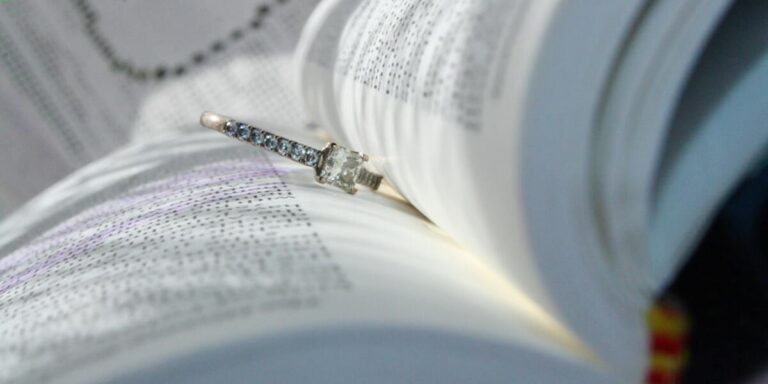Are steel or graphite shafts better?
If you’re in the market for new golf clubs, you may be wondering if steel or graphite shafts are better. Here’s a quick rundown of the pros and cons of each type of shaft to help you make your decision.
Steel shafts are typically less expensive than graphite, and they offer more control and accuracy. However, they also tend to be heavier than graphite, which can affect your swing speed and distance.
Graphite shafts are lighter than steel, which can give you more club head speed and distance. They’re also generally more forgiving on mis-hits since they have a larger sweet spot. However, they can be more expensive than steel shafts and may not offer as much control or accuracy.
Steel vs Graphite Shafts: Which is better?
There are two main types of golf club shafts: steel and graphite. Both have their own benefits and drawbacks, so it’s important to choose the right one for your game. Here’s a quick rundown of each type of shaft to help you make the best decision for your needs.
The most common type of shaft is made from steel. Steel shafts are typically more affordable than graphite, and they offer good durability and performance. One downside to steel shafts is that they can be heavier than graphite, which can affect your swing speed and distance. If you’re looking for a solid all-around option, however, steel is definitely worth considering.
Graphite shafts are made from – you guessed it –graphite! They tend to be lighter than steel shafts (although there are some heavy duty options available), which can help increase your swing speed anddistance. Graphite is also less likely to break or crack thansteel, making it a good choice if you play on harsher terrainor in colder weather conditions when the ground tends tobesome harder . However, graphite or composite golf clubsare often more expensive upfront , although they may lastlonger overall since they aren’t as susceptible towearand tear . Ultimately ,the best choice foryoucomes down topersonal preferenceand what worksbestforyourgameduringtesting
The Pros and Cons of Steel and Graphite Shafts
Steel shafts are made of, you guessed it, steel. Graphite shafts are made of a carbon fiber composite material. The benefits of steel shafts include affordability and more consistent ball striking. The main drawbacks to steel shafts is that they are significantly heavier than graphite and can cause more vibration in the hands upon impact.
Graphite shafts offer a number of advantages over steel including being much lighter weight which results in increased club head speed for longer drives. They also tend to be more forgiving on mis-hits as well as providing less feedback or “sting” in the hands on poorly struck shots. However, graphite can be considerably more expensive than steel especially when custom fitted and installed into clubs by a professional golf club fitter/maker
Comparing Steel and Graphite Shafts for Golf Clubs
There are two primary types of shafts used in golf clubs: steel and graphite. Each has its own set of benefits and drawbacks, so it’s important to understand the differences before making a purchase. Steel shafts are generally more affordable than graphite, but they can be heavier and less forgiving on miss-hits. Graphite shafts are typically lighter than steel, which can help create more clubhead speed and distance; however, they often come with a higher price tag. Ultimately, the best choice for you will depend on your budget and playing style.
How to Choose the Right Type of Shaft for Your Golf Club
When it comes to golf clubs, there is no one-size-fits-all solution. The type of shaft that works best for you will depend on your individual swing and playing style. However, there are some general tips that can help you choose the right shaft for your golf clubs.
If you have a slow swing speed, then you should look for a shaft with a flex rating of R or S. These stiffer shafts will help you generate more clubhead speed. If you have a fast swing speed, then you can benefit from using a softer flex shaft which will help promote accuracy.
The length of the shaft is also important to consider when choosing the right type of shaft for your golf club. If the shaft is too long or too short, it can impact your ability to make solid contact with the ball and produce accurate shots. Therefore, it’s important to get fitted by a professional so they can find the perfect length for your height and swing characteristics.
Finally, keep in mind that different types of materials (e.g., steel vs graphite) can also affect how each particular shaft performs.”
The Benefits of Using Steel or Graphite Shafts in Golf Clubs
There are many benefits to using steel or graphite shafts in golf clubs. Steel is more durable and provides more power, while graphite is lighter and easier to swing. Each type of shaft has its own advantages and disadvantages, so it’s important to choose the right one for your game.
Steel shafts are made from a single piece of metal, so they’re very strong and resistant to damage. They’re also heavier than graphite shafts, which gives them more mass and creates more power when you hit the ball. However, this extra weight can make them harder to control, especially for beginners.
Graphite shafts are made from layers of carbon fiber that are bonded together with resin. This makes them much lighter than steel shafts, which makes them easier to swing. The downside is that they’re not as durable as steel (they can snap if you hit something hard with them), but they’re still quite tough overall.
What are the Differences Between Steel and Graphite Shafts?
If you’re new to golf, you may be wondering what the difference is between steel and graphite shafts. Here’s a quick rundown of the pros and cons of each type of shaft to help you make the best decision for your game.
– More affordable than graphite shafts
– Generally more durable than graphite shafts
– Can provide more control over the ball due to their stiffness
– Heavier than graphite shafts, which can lead to fatigue during long rounds
Advantages/Disadvantages Of Different Types Of Golf Club shaft Materials
Different types of golf club shafts are made from different materials. Some common materials used for shafts are steel, graphite, and titanium. Each type of material has its own advantages and disadvantages that can affect your game. Here is a look at the pros and cons of each type of shaft material:
-Inexpensive compared to other materials
-Provides good feedback to the golfer on shots
-Heavy which can add extra swing weight to the club head
-Does not absorb vibrations as well as some other materials
Graphite Shafts: Advantages: Lightweight which can help increase swing speed -Can help reduce vibration on miss hits Disadvantages:-More expensive than steel shafts – Can break more easily than steel shafts Titanium Shafts : Advantages : Lightweight like graphite but stronger making it less likely to break Expensive like graphite however may last longer if looked after properly Excellent vibration dampening properties making it great for those with sensitive joints or arthritis Disadvantage May make clubs feel stiffer due to lack of give
Frequently Asked Question
-
Do golf clubs go bad?
-
What happens when you put Vaseline on a golf club?
-
What clubs should an average golfer have?
-
Are golf clubs worth money?
-
How many years should golf clubs last?
-
Are old golf irons still good?
-
What can I do with old golf clubs?
-
How often should I replace my golf clubs?
-
What’s the average distance for a 7 iron?
-
Should 20 year olds replace golf clubs?
-
Can you play good golf with old clubs?
-
Can I use 20 year old golf clubs?
-
Are steel or graphite shafts better?
-
What is the difference between cheap and expensive golf clubs?
-
Are old golf clubs of any value?
Golf clubs eventually wear down and need to be replaced. This will be a slow process for the average player, but it is important to recognize what could go wrong if your clubs aren’t replaced regularly.
All grease (Vaseline or sunscreen, ChapStick etc.) on your face. Sidespin created by a poor swing will decrease, which means that the ball will not curve as well. Backspin can also be lost, depending on how you launch.
It is unnecessary to carry all 14 clubs to a first trip to the course. For beginners, you will need a set of clubs to get started. You should also have a set for long drives (hybrid preferred), and three or four irons. A wedge is also a good choice.
A golf club, like all collectibles is worth only what you are willing to spend. Often, the costs of refinishing it will be more than its actual value. Old is only a term. The rarest and most Spalding clubs can be used as an antique criteria.
A quality set of irons for golf can last between 8 and 10 years if taken care of properly. Sometimes, it may even last 12 years. This is what it means. Take care of your clubs and they will take care you.
Golf clubs don’t deteriorate. There are no signs to support this. Clubs that are well maintained will last for a long time. Clubs older than 10 years should be inspected for more options, but clubs younger than 5 years are not in danger.
You can sell your old golf clubs to 2nd Swing Golf or Golf Galaxy. You can sell them to Play it Again Sports. Old golf clubs can be donated to charitable organizations or golf courses. Give your old golf clubs to friends or colleagues.
Amateur golfers don’t notice a significant difference between clubs from year to year. However, I recommend that your club set be replaced every three or four years, especially if it is older than you. Pay attention to the lofts of your new irons.
Average golfers hit their 7-iron 145 yards. However, the distances can vary from 128 to 160 yards. The longest distance is usually hit by golfers in their 20s. As they age, the average length of the shot decreases.
This trend should slow down, although I expect it to. However, if you have long-game clubs that are over three years old, then you might want to consider upgrading. A set of irons should last between five and ten years, unless you are a heavy player who shuts down the range every night.
A recent golf club is always a great value, provided it’s in excellent condition and fits you well. Used clubs are definitely an option if you’re willing to do some research or get help from someone who is a good salesperson.
Golf clubs don’t deteriorate. There are no signs to support this. Clubs that are well maintained will last for a long time. Clubs older than 10 years should be inspected for more options, but clubs younger than 5 years are not in danger.
Steel has a tendency to produce very little torque, which means that there is less rotation during swings. Graphite on the other hand can have much better torque rates and more flexibility in the tip. Combining these two will improve launch, and allow you to swing more quickly with less effort.
High-end clubs tend to be more expensive than lower-end clubs. They are usually made from metals such as graphite or titanium. However, cheaper clubs may have shafts made of steel and heads with aluminum and zinc.
The average vintage club on the market today is worth between $10 and $20. A club the same as today would have cost $40-50 in 20 years. Foreign buyers were more in demand back then.
Conclusion
There is no definitive answer to the question of whether steel or graphite shafts are better. It ultimately comes down to personal preference and what you are looking for in a golf club. If you are looking for durability, then steel shafts may be the way to go. However, if you are looking for a lighter club, then graphite shafts may be the better option. Ultimately, it is up to the individual golfer to decide which type of shaft works best for their game.
No matter which type of shaft you choose, one thing is for sure: used golf clubs can provide a great value! Whether you’re looking for new clubs or trying to save some money on your next set, used clubs can be a great option. So don’t be afraid to check out your local pro shop or search online for some great deals on used clubs.







